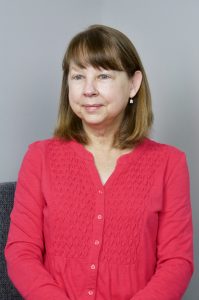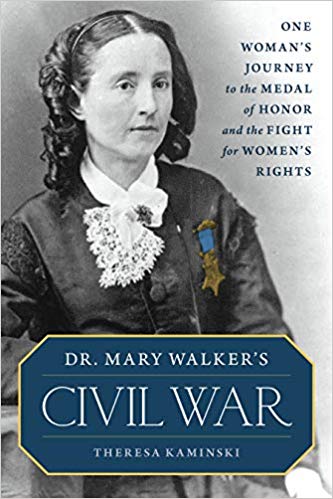Talking About Women’s History: Three Questions and an Answer with Theresa Kaminksi
Theresa Kaminski and I are co-administrators (and occasionally, co-conspirators) for a Facebook reading called Non-Fiction Fans, where readers and writers of narrative nonfiction meet up to talk about great non-fiction and how it gets written. She is also a wonderful writer of women’s history and a generous member of the on-line literary and historical community.
Theresa holds a PhD in history from the University of Illinois at Urbana-Champaign. For more than twenty-five years she worked as a history professor at a state university in Wisconsin. She is the author of a trilogy of nonfiction histories on American women in the Philippine Islands during World War II. Her book on Dr. Mary Walker is due out from Lyons Press in June 2020.* She is currently completing the first full-length biography of America’s favorite cowgirl, Dale Evans. Theresa lives with her husband in a small town outside of Madison, Wisconsin.
Take it away, Theresa:
You have been working on biographies of two women whose names many of my readers will recognize, Dr. Mary Walker, of the American Civil War, and Dale Evans, pop-culture cowgirl extraordinaire. Are there particular challenges in writing about women people think they know something about?
The Mary Walker book was probably easier in this regard. Even for people who have heard of her (the only woman to receive the Congressional Medal of Honor), few know many of the details of her life. It was fascinating to delve into those. The biggest challenge stemmed from the fact that while Walker left behind a lot of public writing, there’s not much of the personal kind.
The same is pretty much true of Dale Evans. As a celebrity, she was really good at all the public stuff, especially giving interviews and writing books about her life. But in researching beyond what she wrote about herself, I’ve uncovered things she rarely talked about publicly. Not that these things were negative or scandalous, but I could see why she wanted to control if and how they were discussed in public. Most people probably don’t know about them because Dale was so adept at highlighting what she wanted to emphasize. I’ve just been fascinated with how she constructed her own celebrity. So I think a lot of people who know the public Dale will be fascinated by the behind-the-scenes stories.
You’ve successfully made the jump that many academics dream of, from writing purely academic work to writing rock-solid scholarship with a popular audience in mind. Do you have any advice for writers who dream of doing the same?
It’s funny, but I think of that “jump” more of as a slow (sometimes painfully so) learning process. My first two books on American women in the Philippines were scholarly, but what drew me to the topic was the drama of their stories. Academic writers interested in making the move to trade presses should definitely read a lot of popular history to get a sense of how narrative is used. I recommend Jill Lepore since I turn to her books for inspiration on how to focus on story. Lepore’s output is also a reminder that good history can be written rather quickly. Trade press editors won’t wait ten years for the delivery of a manuscript!
What have you read lately that you loved?
I always have to push myself to read something on non-American topics, and I was so happy I picked up Hallie Rubenhold’s wonderful history, The Five: The Untold Lives of the Women Killed by Jack the Ripper. It’s a first-rate social history of late 19th century London and the lives of the poorer women who lived there.
A question from Theresa for Pamela: You have worked on topics that tend to be global in nature and feature war and politics. How have you come to focus more on women’s history?
It’s hard to get more global or war-centric than a global history of women warriors!
That said, I would argue that in focusing more on women’s history I have returned to my historical roots. The first biography I ever read was about Clara Barton. My guess is the second was a book about Joan of Arc. Ten-year-old me would have been very excited to get her hands on a book on Civil War nurses, or on on women warriors for that matter.
Want to know more about Theresa Kaminski and her work?
She blogs about women’s history and the writing life at https://theresakaminski.com/.
Her Twitter handle is @KaminskiTheresa
*I had the privilege of reading an advance copy of this. I’ll post a review here on the Margins when it comes out, but the short version is it’s really good.
Come back tomorrow for three questions and an answer with Sunny Stalter-Pace, who writes about modernist art and literature. Her biography of innovative vaudeville performer and producer Gertrude Hoffman is due out in May. Mark your calendars.)






